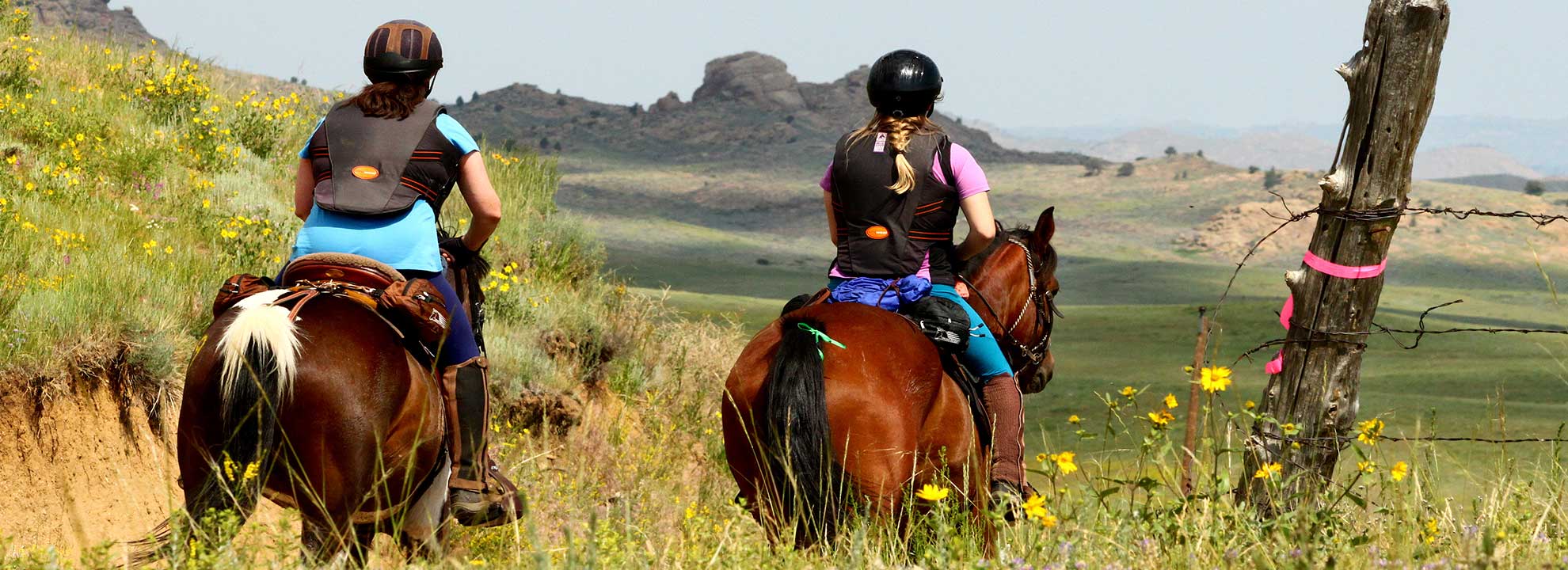Mentorship is a one-on-one relationship formed between an experienced endurance rider and another new to the sport who is seeking insight and advice on a range of relevant topics. New riders may differ greatly in the amount of experience they may already possess in other riding or athletic disciplines; in their short and long term goals within the sport; and the resources and time they are able to reasonably invest in meeting those goals. Likewise, mentors can vary in the extent and level of competition experience they bring; in the type and amount of assistance they are able to provide; and in differing personality and communication styles.
In general, most mentor-protégé relationships focus on preparing new riders for their first limited distance or endurance ride. In some cases, the relationship may continue on past the introductory phase to more advanced goals such as riding longer distances, at a more competitive level, or participating in multi-day events. At all times, the primary goal of both parties should be focused on the management of the unique stresses placed on endurance horses, with an eye towards avoiding injury or mishap to everyone involved.
The AERC mentor program does not guarantee success, nor is it meant to solve every issue or problem, but is one of several tools available to members seeking a safe and enjoyable introduction to the sport of endurance competition.
AERC believes that mentors and protégés will find their experience to be mutually beneficial. Protégés gain invaluable insight and advice on topics ranging from selecting an endurance prospect to conditioning, nutrition, riding strategies during the event and introduction to the infrastructure and rules of competition. Likewise, mentors develop their leadership, communication and coaching skills while “giving back” to the sport. For both parties, a successful mentor-protégé relationship often also results in lifelong friendships both in and outside the endurance community.
AERC mentors are not paid for their time; mentoring is their way of “giving back” to the sport.
A Successful Mentor Encompasses Several Roles, Including:
Coach. Help identify specific, realistic and attainable goals; provide feedback on the protégé’s strengths and opportunity areas; provide both constructive criticism and positive reinforcement to help the protégé build confidence both before and during their first season of competition.
Advisor. Provide the protégé with specific information regarding selection, preparation and management of the endurance equine. Identify and implement an action plan to strengthen the horse-rider team and overcome potential and existing obstacles; help the rider learn the critical “tricks of the trade” to engender safety and good horsemanship during conditioning and competition.
Navigator. Orient the protégé to the organization and flow of a typical endurance ride, including control checkpoints, pulse criteria and hold times; completion checks and Best Condition judging; educate the rider on the use of ride maps, mapping technology, trail markings, and judging terrain; how to avoid going off course, overtime and other common errors; facilitate access to additional information and education pathways from AERC and other sources; continue to clarify and redefine changing goals and objectives to stay on track.
Communicator. Offer the protégé new perspectives, encourage new ideas and progressive goals; encourage a two-way exchange of information through discussion, demonstration and practice sessions; listen and respond to concerns; provide encouragement and congratulations when goals are met or exceeded; facilitate additional learning pathways within the endurance community.

